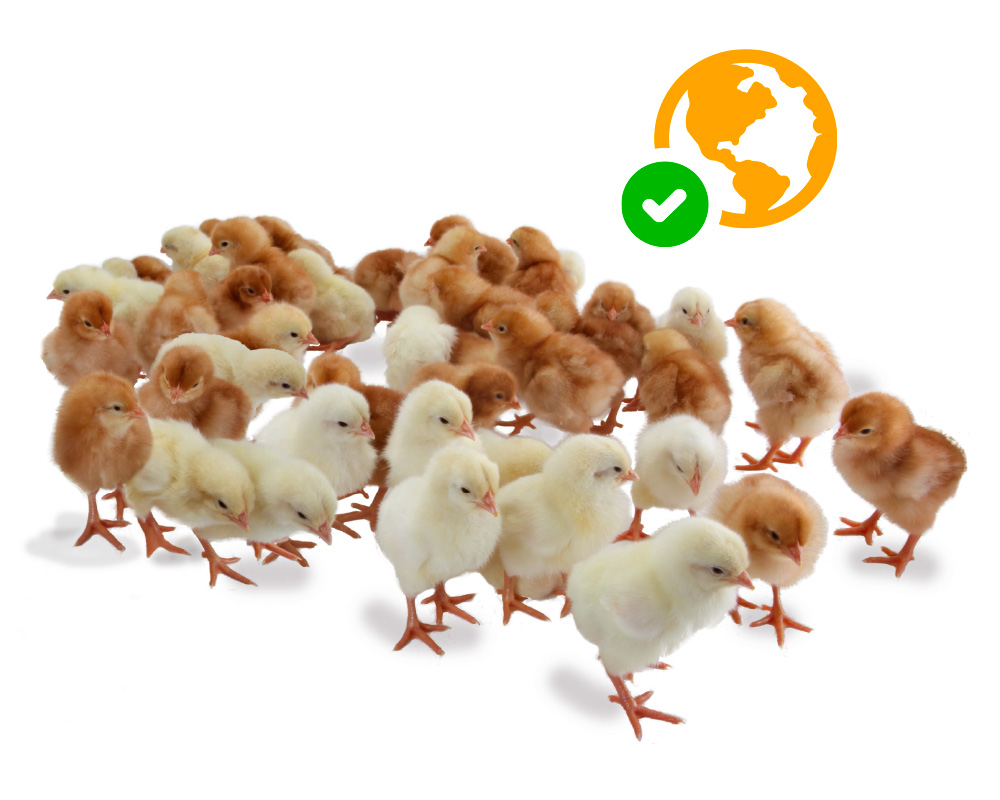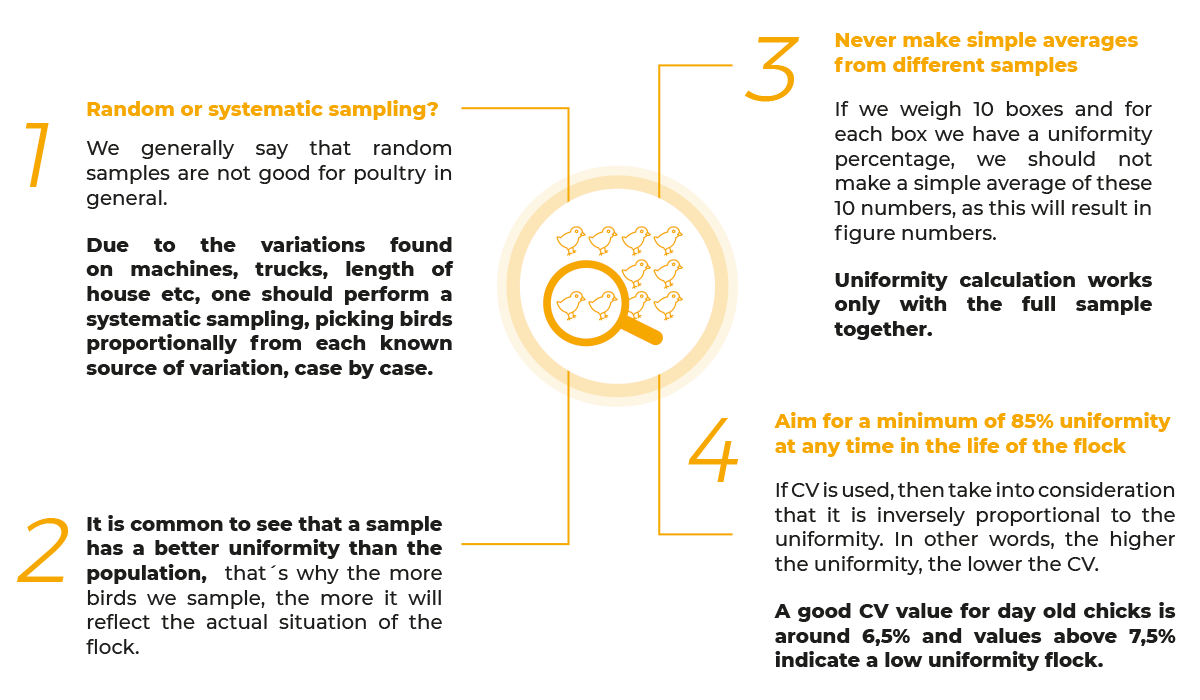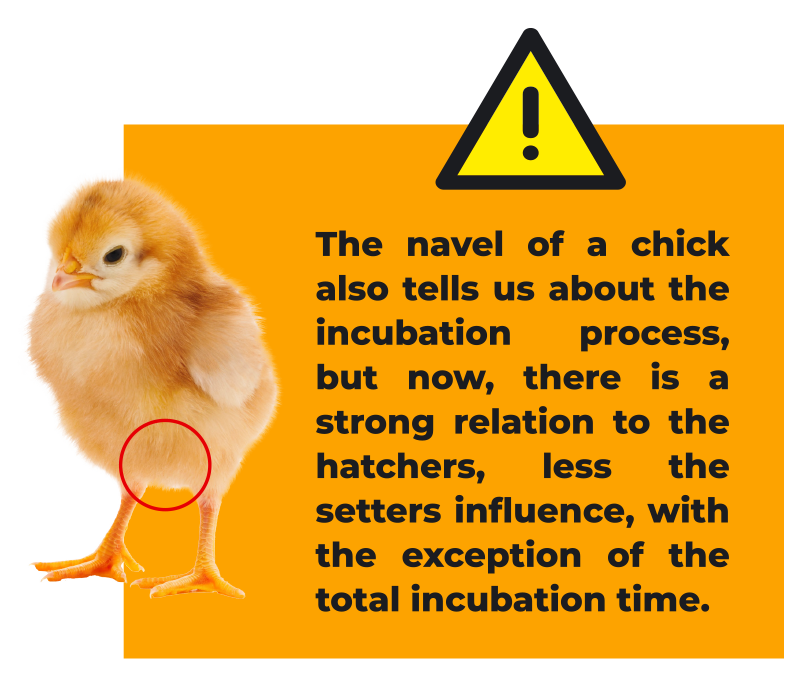When we talk about chick quality, often we think of navels, beak and all these basic, and yet important, traits which have a direct impact on the overall performance of a single bird, generally causing a lifetime influence on it.
However, the subject chick quality must be seen under a more holistic overview, instead of only on the physical traits of the individual. This includes 3 main parameters, as follows.

Health conditions
First important thing is to know the health status of the flock, by means of sample collection. Main pathogens of concern in our business include Salmonella and Mycoplasma, but others are also important such as E. coli and fungi contamination. While the first ones are usually controlled by local authorities as well, the latter are mostly monitored at farm level only.
E. coli and some fungi can cause severe impacts on chick quality and performance and normally the source of infection can be the breeder farm or the hatchery and less likely the transportation process as well as farm conditions.

Breeder nutrition
Chicks are directly prone to express breeders’ nutritional deficiencies, since 100% of their body composition is a result of egg metabolism during embryogenesis. Once the egg lacks essential nutrients, hatchability is directly affected, while some chicks can make it to hatch. These chicks will show some clear signals and that may include bone fragility, twisted or curled toes, beak deformities, nervous signs, splayed legs (which may have other causes).

Physical traits
Finally, this is where most people look at more carefully upon chick arrival. We´d like to split this parameter into two criteria: massive traits and individual traits. Inversely to the health conditions, the physical traits are commonly caused by hatchery management, mainly but not limited to, temperature and humidity management from egg to chick.

Massive traits
Most important point to look at is chick uniformity. Chick uniformity has a huge impact on overall flock performance, not only during first days, but also at production. Low uniformity flocks will later show impaired onset of production which leads to low production peak, culminating to a lower number of eggs per hen housed. When we think of other managements impacted by low uniformity not only production is affected as also immunization can be affected, since there may be uneven vaccine distribution/absorption/intake among different sized birds.The uniformity as we know it, e.g., percentage of birds within the range of + 10% of average body weight is not recognized as an official scientific parameter, while the coefficient of variation (CV) is.

However, the use of uniformity is applied worldwide and works just as fine as CV in field practice. Regardless of using uniformity or CV, sampling of birds is the critical factor. Some companies use a fixed % of the flock while others use a fixed number of the birds depending on flock size. Both ways work well, and here we have some advice for bird sampling:

Individual traits
Here it comes to the physical traits by which we are all used to evaluate chicks. By checking individual traits such as feathers, beak, nostrils, navels, legs etc., we may use one of the well spread tools such as Pasgar or Tona score to have an overview of the flock.Good quality chicks show large and fluffy feathers. Also, feathers must be dry, not sticky, and yellowish. It is always good to remember that color of the feathers comes from the yolk pigments. That being so, one may think that the more yellowish, the better but this is not always correct. Sometimes we see more colored chicks whose breeder flock of origin was given artificial or natural pigments and they are not good or bad because of it.
Therefore, regarding the quality evaluation by color, the color tone is not the most important factor. The uniformity of color distribution is. The more uniform the chicks are in color, the best the flock is. It is a direct indication of good and even yolk absorption.
Good quality chicks also show rounded and bright eyes, no lesion on the nostrils or hocks. These kinds of lesions are associated with either high temperature at second half of incubation or low water loss due to a higher relative humidity profile that can take place at any time during the entire incubation cycle.
Or stress in the delicate phase of the hatch, that can be: wrong temperature, light switched on, poor ventilation and lack of oxygen in hatcher machine. Chicks showing these signs in a moderate level should not be culled, as in the majority of the times they can recover when placed in a separated pen with good light/heat/water/feed source. However, if there is any sign of bleeding, it is going to be hard to recover as these chicks can get an infection and even spread it out.

Navel healing is a temperature and humidity dependent process, and it takes long to complete, meaning that even after being pulled, the navels are still in process of closing.
Sometimes we see late yolk sac infection even in good naveled chicks and this can be attributed to poor hygiene conditions of hatcher basket, chick boxes and even farm pens, all after hatch steps, long eggs storage.
Open naveled and black buttoned chicks must be culled, as the odds of recuperation is too low and risks of spreading contamination is too high, but is clear evidence that some part of hatchery process need adjustments, String navels are usually not a big point of concern, once the environment is clean enough, as it falls off in a few days.
One can´t notice it naked eyes, but internally the closure of the connection of the navel to the yolk may take up to 2-3 days and before full closure of the navel and rupture of this internal connection, the navel is still an open port to the richest culture media for bacteria, the yolk.
Finally, the legs are easy to evaluate for chick quality. By grabbing 3-5 chicks and turning them down, we can see many legs at once and look for signs of dehydration, where it manifests first in the chicks.
These are one of the important things to look after and to consider when we discuss chick quality. With simple and objective procedures, we can have a reliable evaluation of a day-old chick flock.
Legs must be bright, shanks should round (indication of enough water content) and long, with no lesions of any kind. When there are signs of dehydration, we are all inclined to open a few birds in attempt to grade the severity of it by looking for urates or even gout. When these are found, special attention must be given to the chicks and a 100% grade on the flock is highly advisable.
If any question arises, it will be a pleasure for the Global LOHMANN BREEDERS Technical Service Team to serve you and your company.










 Incubation
Incubation